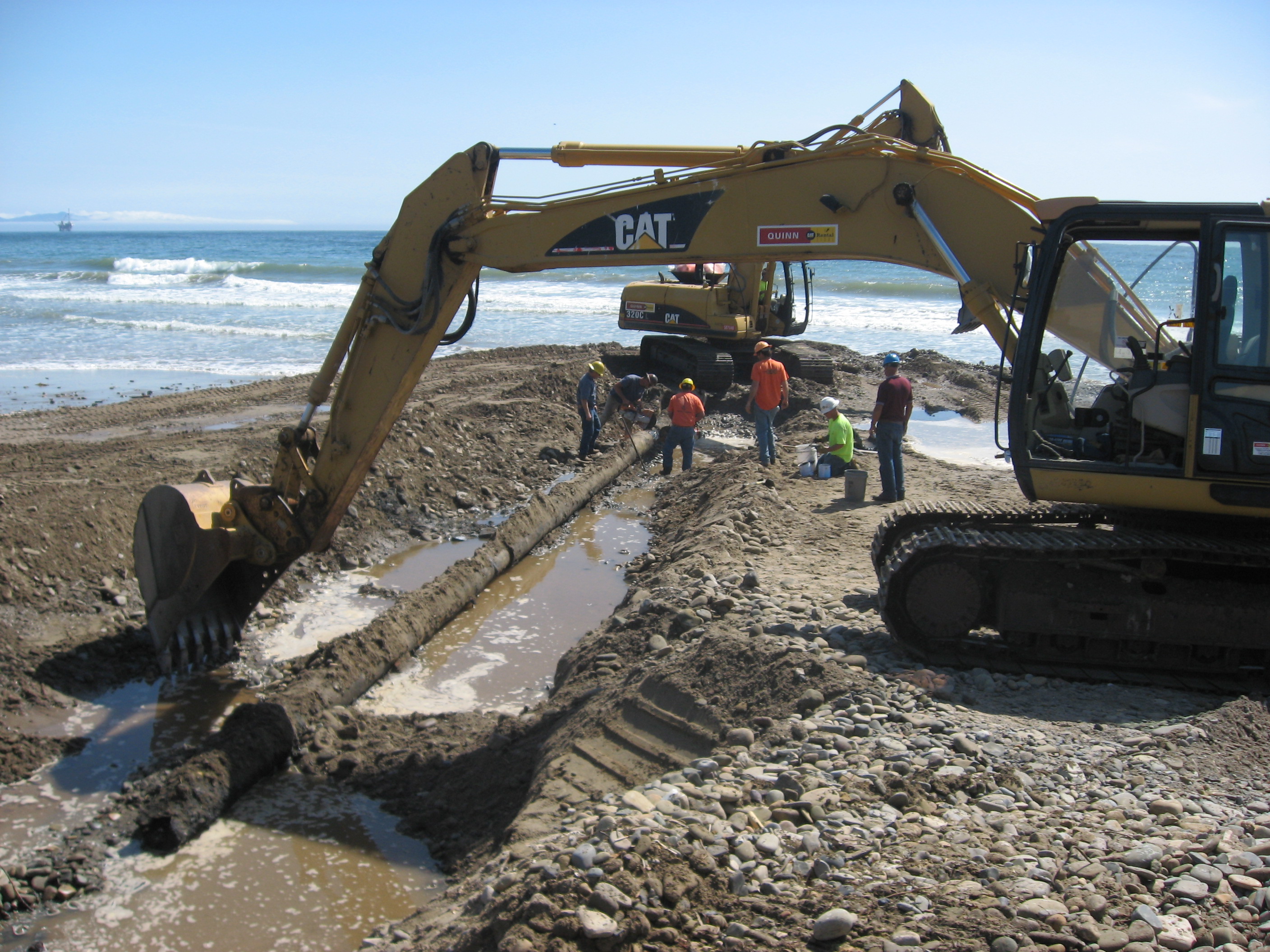Cleaning Up Hazardous Oil-Pier Debris
State Helps Rid Haskell's Beach of Rusting Infrastructure Remnants
Resumption last month of the state’s beach-hazard cleanup operations along Santa Barbara County’s coastline was welcome news to Goletans as well as all who swim, surf, or just walk their dogs on Haskell’s Beach.
Removal of abandoned rusty pilings, beams, pipelines, and other oil industry discards from this beach—the only one inside Goleta’s boundaries—has greatly reduced the odds of unwary visitors colliding with sharp metal and wooden objects. However, those involved with what State Lands Commission officials call the Santa Barbara Channel Hazards Removal Program agree that more so-called “orphaned” debris likely lurks beneath sand and surf.

The type and quantity of infrastructure debris still buried under local beaches at former petroleum extraction locations (calling it orphaned usually means it is old and the original owners are long gone) are indicated by the load recovered from two mostly cleaned sites on Haskell’s.
Associate Planner Laura Vlk, who is the City of Goleta’s liaison with State Lands and the local contractors hired for the job, recently supplied, to a city committee and to the Goleta Grapevine, the following list of removed hazards: 25 to 30 wooden piles; 60 to 80 feet of wooden sheets; six railroad irons; 15 steel “H” beams (for pier support); 60 to 70 feet of steel pipe six inches in diameter; and roughly 150 feet of other corroded pipelines with diameters of up to 14 inches.
This was more debris than originally identified by a 2002 survey, part of the State Lands Commission’s inventory of 24 high-priority cleanup sites between Gaviota and the Ventura River. However, underestimates are normal in the coastal hide-and-seek game played between remnant structures and rivers of shifting sands.
“In some sites we’re seeing more hazards than we’d seen before, due to winter storms scouring the beaches the last couple of years,” explained Greg Scott, chief of mineral resources management and a 30-year State Lands Commission veteran. He said that hazard removal programs like the current one for the Channel have been part of the commission’s public safety agenda ever since he joined the agency.
One of Scott’s senior engineers, Madhu Ahujar, said that any new hazards are added to the project inventory when discovered, and if more debris is unearthed than forecast, all of it comes out. One site near the former Miramar Hotel in Montecito produced a crop of 480 railroad irons, eight times more than expected. All of the irons—former railroad track driven into the ground to stabilize piers—were reported removed.
Though a state agency administers the funds, the cleanup money comes from the federal Coastal Impact Assistance Program. Roughly $385,000 of the total $700,000 impact grant has been used this year to pay for hazard removal at four sites in the county, according to Ahujar. These included two on Montecito’s Fernald Point, and the two at Haskell’s.

Vlk said she hopes to see the remaining visible debris at Haskell’s extracted this coming winter after seasonal storms scour the beach. Echoing her sentiments, Ahujar said, “That’s the plan.” Nonetheless, Vlk urged emails supporting completion of the Haskell’s cleanup be sent to Madhu.Ahuja@slc.ca.gov.
“We try to use Mother Nature to do most of the work for us,” added Dave Brown, the commission’s fiscal chief, because sand removal is a major part of the cleanup cost. This strategy stretches scarce funding, creating what Brown called “more bang for our buck.”
While it could not be officially confirmed, some Goleta administrators felt that hosting then-assemblymember Pedro Nava’s environmental oversight committee last September greatly improved the city’s beach-cleanup prospects. “I asked Assemblymember Nava to bring his hearing here,” recalled Councilmember Roger Aceves. “It worked well; we had significant players” testifying on the legacy of coastal oil drilling and production.
They included the State Lands Commission’s executive officer at the time, a top state environmental agency director, and a representative of the oil industry. Nava pressed them in public to speed the cleanup of orphaned debris.
“I was afraid it would be all talk and no action,” Aceves said afterward. However, he continued to press his contacts in Sacramento and was promised what he described as a down payment for cleaning up abandoned infrastructure.
Beachgoers in Goleta and Montecito may now be enjoying the first fruits of the cleanup, but residents need to tell the State Lands Commission they support continuation of the effort.



